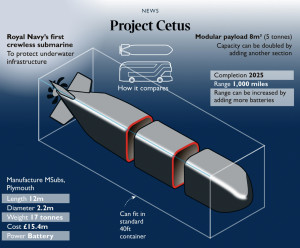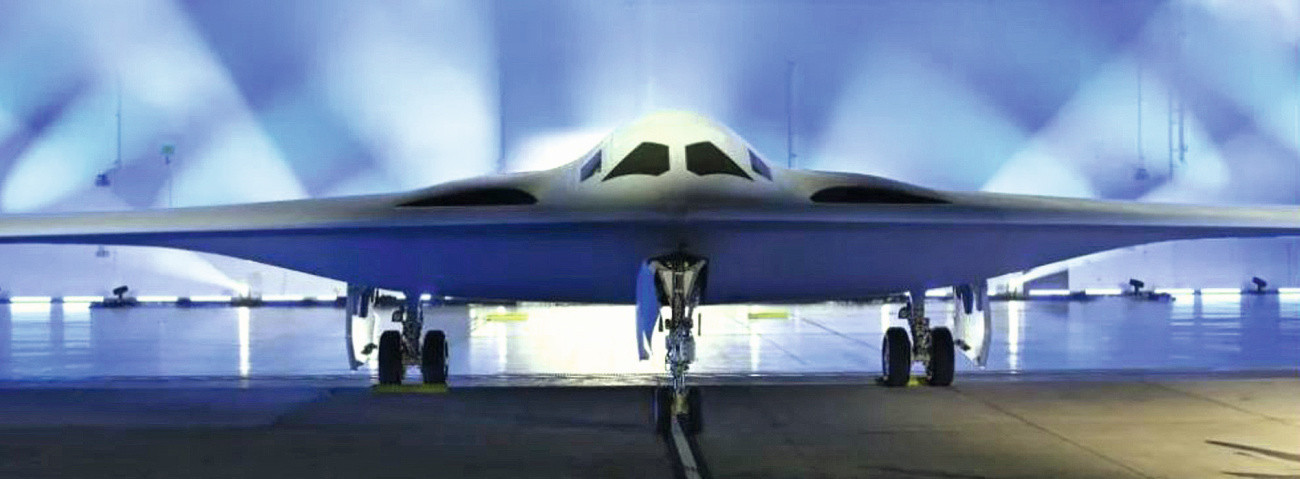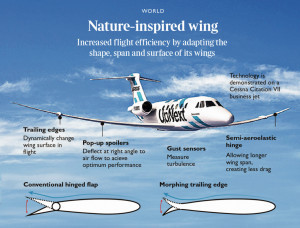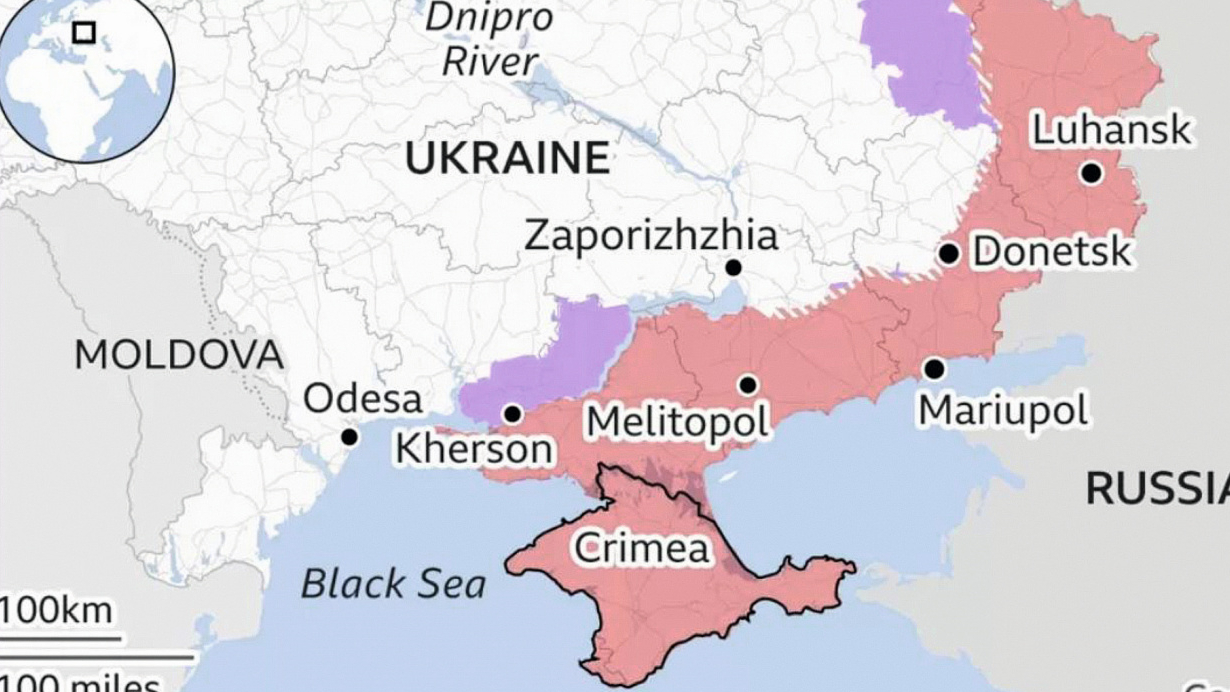What will 2023 bring us?
At the start of the new year, many of us are thinking about Ukraine, where the war will soon be a year old. Ukrainians have bravely and wisely defended their country against the Russian oppressors. But at the moment, the Ukrainian people have three main fears. They fear the Russian missiles that hit not only power stations and waterworks, but also homes and hospitals. They fear the deep cold of the Ukrainian winter. And last but not least, they fear that their friends and allies in the West will grow weary of a conflict that is distant to them and no longer support them. The fact is that there are many people in Germany, France and Italy who want to end the conflict at all costs. These people, even if they don't say so openly, are prepared to grant Vladimir Putin a small victory in return for "peace". So after the invasion of Crimea in 2014, they would also be prepared to let him conquer the Donbass. And after that? With the deep onset of winter, military operations have almost come to a standstill. But let's take a look at a map. Figure 1 shows the military situation (as of mid-December).
 Fig. 2: Tokamak Energy's new spherical ST40 fusion reactorI'm no military expert, but what could the Ukrainian military be planning? To the east, the Dnipro River, which runs east of Kherson, is a natural barrier. The Russian troops are deeply embedded on the eastern side. But the long strip of land to the south, including Crimea, is more vulnerable. It is certain that the Ukrainian military is considering another attack on the Kerch Bridge - and the Russians will know this. At 17 km long, it is not easy for Russia to defend. The bridge could be attacked from the sea, from the air or - as happened - by a vehicle crossing it. In addition, the winter in the south and in Crimea is less severe than on the Ukrainian mainland. Outside Ukraine, there is a battle that Putin now seems to have lost. Putin had apparently believed that the EU would not impose the many economic sanctions it had threatened if he threatened to cut off Russian natural gas supplies to Germany via the Northstream pipeline. The EU has called Putin's bluff - he has indeed cut off gas supplies via the Northstream pipeline and it looks as if Europe - with any luck - will survive this winter without major damage. As a well-known German politician said in the past: "We can do it". Skilful management in Germany meant that German natural gas reserves were around 95% full at the start of the winter. At the same time, the alternative natural gas supply from the USA and the Middle East with LNG (liquefied natural gas) has developed successfully. LNG plants have been and are being built rapidly in Germany and throughout Europe, and there is no shortage of LNG tankers. It is true that these new sources of natural gas are currently more expensive than Russian natural gas in 2021. The entire LNG operation also emits more greenhouse gases than the pipelines. The war in Ukraine has made almost all European governments realize how important a stable energy supply is and has accelerated the construction of renewable energy plants. It seems clear that Europe will no longer be dependent on Russian natural gas in the foreseeable future, and Russia will have to look for new customers - who will certainly demand a lower price. So let us wish the Ukrainians every success in regaining their homeland - and much strength to deal with the shortages of electricity and heating due to Russian shelling. At the same time, the majority of the Russian population is suffering from the shortages and rising prices of many products, the conscription of hundreds of thousands of young men into the army and the death or wounding of around 100,000 Russian soldiers. Will Vladimir Putin survive as Russian president? And if he goes, will a more decent successor replace him? These are questions that many of us will be asking ourselves in the new year.
Fig. 2: Tokamak Energy's new spherical ST40 fusion reactorI'm no military expert, but what could the Ukrainian military be planning? To the east, the Dnipro River, which runs east of Kherson, is a natural barrier. The Russian troops are deeply embedded on the eastern side. But the long strip of land to the south, including Crimea, is more vulnerable. It is certain that the Ukrainian military is considering another attack on the Kerch Bridge - and the Russians will know this. At 17 km long, it is not easy for Russia to defend. The bridge could be attacked from the sea, from the air or - as happened - by a vehicle crossing it. In addition, the winter in the south and in Crimea is less severe than on the Ukrainian mainland. Outside Ukraine, there is a battle that Putin now seems to have lost. Putin had apparently believed that the EU would not impose the many economic sanctions it had threatened if he threatened to cut off Russian natural gas supplies to Germany via the Northstream pipeline. The EU has called Putin's bluff - he has indeed cut off gas supplies via the Northstream pipeline and it looks as if Europe - with any luck - will survive this winter without major damage. As a well-known German politician said in the past: "We can do it". Skilful management in Germany meant that German natural gas reserves were around 95% full at the start of the winter. At the same time, the alternative natural gas supply from the USA and the Middle East with LNG (liquefied natural gas) has developed successfully. LNG plants have been and are being built rapidly in Germany and throughout Europe, and there is no shortage of LNG tankers. It is true that these new sources of natural gas are currently more expensive than Russian natural gas in 2021. The entire LNG operation also emits more greenhouse gases than the pipelines. The war in Ukraine has made almost all European governments realize how important a stable energy supply is and has accelerated the construction of renewable energy plants. It seems clear that Europe will no longer be dependent on Russian natural gas in the foreseeable future, and Russia will have to look for new customers - who will certainly demand a lower price. So let us wish the Ukrainians every success in regaining their homeland - and much strength to deal with the shortages of electricity and heating due to Russian shelling. At the same time, the majority of the Russian population is suffering from the shortages and rising prices of many products, the conscription of hundreds of thousands of young men into the army and the death or wounding of around 100,000 Russian soldiers. Will Vladimir Putin survive as Russian president? And if he goes, will a more decent successor replace him? These are questions that many of us will be asking ourselves in the new year.
Just a week after the announcement of a breakthrough in nuclear fusion by the LLNL in California, another breakthrough in nuclear fusion - this time from the UK. Tokamak Energy's ambition to demonstrate grid-ready fusion power by the early 2030s has received a boost after its compact spherical tokamak ST40 (Fig. 2) produced its first plasma following an upgrade. In March 2022, the company achieved a plasma temperature of 100 million degrees Celsius in the ST40 tokamak for the first time. This is the threshold required for commercial fusion energy and also the highest temperature ever achieved in a privately funded spherical tokamak. Tokamak Energy's ST40 tokamak was recommissioned in November following a modernization program that included a new high-power laser system with Thomson scattering, which provides greater insight into plasma behavior by measuring temperature and density at multiple locations in the plasma. The new experiments, which Tokamak Energy says will reach plasma temperatures more than six times hotter than the core of the Sun, relate to future features to be incorporated into the recently announced ST80-HTS, the world's first spherical high-field Tokamak with high-temperature superconducting (HTS) magnets, and the ST-E1 fusion pilot plant.
Underwater world
 Fig. 3: "Cetus" an autonomous underwater droneMostof us who live on land have little idea of the underwater world that surrounds our continent. There are gas pipelines, power cables that transport high-voltage electricity and, of course, telecommunications cables that carry voice and internet traffic. Offshore wind farms, which are about 100 km from land, also deliver their electricity to the nearest coast via underwater cables. From a military perspective, these structures are highly vulnerable to attack by a hostile force. They can also be easily damaged by dredgers - whether "accidentally" or maliciously. As mentioned earlier, we still don't know who sabotaged the Northstream pipelines. Was it Russia? The British Royal Navy is developing a robotic submarine to be used for underwater patrols. The new boat, named after the mythical underwater monster "Cetus" that was killed by Perseus, is due to enter service in two years and cost around 18 million euros (which is very little for defense purposes). "Cetus" will be about the size of a double-decker bus and will be able to withstand pressure in deep oceans. The new vehicle, also known as an "underwater drone", is shown in Figure 3.
Fig. 3: "Cetus" an autonomous underwater droneMostof us who live on land have little idea of the underwater world that surrounds our continent. There are gas pipelines, power cables that transport high-voltage electricity and, of course, telecommunications cables that carry voice and internet traffic. Offshore wind farms, which are about 100 km from land, also deliver their electricity to the nearest coast via underwater cables. From a military perspective, these structures are highly vulnerable to attack by a hostile force. They can also be easily damaged by dredgers - whether "accidentally" or maliciously. As mentioned earlier, we still don't know who sabotaged the Northstream pipelines. Was it Russia? The British Royal Navy is developing a robotic submarine to be used for underwater patrols. The new boat, named after the mythical underwater monster "Cetus" that was killed by Perseus, is due to enter service in two years and cost around 18 million euros (which is very little for defense purposes). "Cetus" will be about the size of a double-decker bus and will be able to withstand pressure in deep oceans. The new vehicle, also known as an "underwater drone", is shown in Figure 3.
Cetus will fit into a standard 40-foot container. The submarine can travel up to 1,500 km in a single mission and is designed to enhance the Navy's ability to protect underwater infrastructure. The range can be extended by adding additional batteries. The Royal Navy already has autonomous minehunting systems and is testing small autonomous landing craft. However, the Cetus is the first autonomous submarine. The 12-meter-long vessel is being designed and built by MSubs, a technology company based in Plymouth(www.msubs.com).
2023 - Flying high!
In the world of aviation, the new year has already begun with exciting news. The US Air Force unveiled its new B-21 stealth bomber (Fig. 4), which will cost a whopping 700 million US dollars each. The initial fleet will consist of just six aircraft. Many have remarked that it resembles a "flying saucer". Technical details have not been disclosed, but it is believed to be supersonic.
 Fig. 4: The new US stealth bomber "Raider".
Fig. 4: The new US stealth bomber "Raider".
In civil aviation, the Boomsupersonic (boomsupersonic.com), an aircraft similar to the old Concorde, is struggling with delays in the maiden flight of its XB-1, the so-called "Baby Boom". "Baby Boom". Baby Boom is only a third of the size of the originally planned "Overture" aircraft, which is designed to carry 65-80 passengers at a speed of Mach 1.7 and a range of 7850 km. The first flight of the XB-1 was planned for September 2022. It has now passed all ground-based tests and the maiden flight is expected in the next few months. The launch of the full-size Overture is planned for 2026. It will be powered by the newly developed "Symphony" engine, which can run on sustainable fuels derived from waste or plant-based raw materials, for example.
Here in Europe, a completely different focus is being set. The first flight tests of a technology known as "morphing wings" are to be carried out in France over the next few months using a converted Cessna Citation Executive Jet. They are part of an Airbus project that makes use of nature to develop more efficient commercial aircraft. This is to be achieved by duplicating flight controls on the wings, as shown in Figure 5. The novel system, in which the wings adapt their shape, span and surface in the same way that birds control their flight, is called an "Extra Performance Wing" and was partly developed and tested in the wind tunnel at the British Airbus base in Filton near Bristol. Future commercial aircraft could save up to 10% fuel with this bird-inspired technology, according to Airbus.
 Fig. 5: "Intelligent" aircraft wingsThenew wings, which are being developed by UpNext, the innovation division of the European aerospace group, add several new moving surfaces to the ailerons, flaps, spoilers and air brakes that do the work on the wings of existing aircraft. These are automatically activated by wind sensors and change the shape of the wing in the way that birds refine their flight by bending and adjusting the feathers. "We are making very rapid progress with this wing," said Sandra Bour-Schaeffer, Managing Director of UpNext. The surface of the wing would automatically adjust "depending on what atmospheric conditions the aircraft encounters," she told FlightGlobal News in Munich last month.
Fig. 5: "Intelligent" aircraft wingsThenew wings, which are being developed by UpNext, the innovation division of the European aerospace group, add several new moving surfaces to the ailerons, flaps, spoilers and air brakes that do the work on the wings of existing aircraft. These are automatically activated by wind sensors and change the shape of the wing in the way that birds refine their flight by bending and adjusting the feathers. "We are making very rapid progress with this wing," said Sandra Bour-Schaeffer, Managing Director of UpNext. The surface of the wing would automatically adjust "depending on what atmospheric conditions the aircraft encounters," she told FlightGlobal News in Munich last month.
However, it will be at least a decade before morphing wing technology is used in the development of future aircraft. The converted Cessna jet will take off from Cazaux airbase in southwest France for testing, and a version with full high-performance wings is due to enter service in 2024. In recent years, Airbus research engineers have been pursuing the idea of the early pioneers at the end of the 19th century that people should build flying machines that bend like birds or even flap their wings. The "Flyer", which Wilbur and Orville Wright took to the air for the first powered flight in 1903, tilted and turned by "deforming" its wings, i.e. twisting them. The simpler solution with ailerons on fixed hinges soon prevailed.
In 2019, Airbus published the theoretical design of a hybrid-electric commercial aircraft in British Airways colors with wing and tail structures modeled on those of a bird of prey and with individually controlled "feathers" for flight control. The group has reported progress on AlbatrossONE, a system to equip commercial aircraft with semi-elastic or "flapping" wings modeled on the wingtips of the large seabird. The system, tested on models, would mimic the way the albatross "surfs" effortlessly through turbulence. "This means we need less material, such as carbon fiber-reinforced polymers, to make the wing strong enough to withstand the gusts, reducing the weight of the aircraft," said James Kirk, the project's chief engineer. The airlines are studying another Airbus concept in which the planes would cross the oceans in a V formation like a flock of migrating geese. Airbus tested its "fello'fly" concept, also developed by UpNext, by sending two Airbuses in tandem across the Atlantic last year. The aim is to save up to 10% on fuel by mimicking the way birds get lift from the person in front of them, saving on wing flapping over long distances. Engineers believe the technology is already available for planes to form up after takeoff and cruise in a community much closer than the many miles, or at least hundreds of feet, that currently separate flights. However, it may be more difficult to get passengers to make such close encounters in the sky.
Highlight 2023: Coatings made from algae
At the end of last year, the winners of the Earthshot competition were announced in Boston, USA. Two of them seemed particularly significant. Notpla (notpla.com) is a small company that makes packaging and coatings from seaweed (the name is an abbreviation for "not plastics"). Notpla Coating, which is applied to paper or cardboard, creates a water and grease resistant product, e.g. for take-away meals. In their process, seaweed is converted into sugar. It is then fermented in vats to produce natural polyesters. The product looks like a powder. This is all made possible by the action of microbes. But Notpla is by no means alone, there are now about a dozen companies making coatings, coffee cups and other products from seaweed. Kelpi(www.kelpi.net) is one of many. In the USA, there is the Tom Ford Plastic Innovation Prize, which offers over 1.2 million US dollars for new plastics based on renewable sources. This year's winners will be announced in the spring. Seagrass is abundant and growing very fast. If I were to make a bold prediction, it would be that by 2023 we will be hearing a lot more about coatings and products derived from seaweed and kelp. And - before I forget - these coatings and products are edible. So readers can drink their coffee from a cup made from seaweed - and then eat the cup itself. Enjoy the taste!
Another winner of an Earthshot prize was a team from Oman. They call themselves 44.01, which is the molecular weight ofCO2. They have developed a technology to removeCO2 from the atmosphere by trapping it underground in the mineral periotite. TheCO2 is dissolved in water and this carnonized water is pumped underground where it reacts with the mineral. Unlike carbon storage, where theCO2 is buried in abandoned oil wells or aquifers, theCO2 is permanently removed during mineralization. This means that no long-term monitoring or insurance is required, making the process ultimately more cost-effective, scalable and safer.
44.01's first project will mineralize 1,000 tons of locally capturedCO2 annually by 2024. The company plans to expand its operations internationally soon to enable on-site mineralization without the need for costlyCO2 transportation. The goal of 44.01 is to mineralize 1 billion tons ofCO2 by 2040.
As the world transitions to clean energy, 44.01 is also creating new jobs for engineers and geologists working in the fossil fuel industry. As Oman has the world's largest concentration of peridotite, carbon mineralization could also be a boon for workers in the region. By trying to solve global problems, 44.01 will also solve local problems.
Congratulations for 2023
With this in mind, I wish the "electroplating community" all the best for 2023. It will bring problems - but also solutions. The innovation stronghold of Europe is a very special place. Let's cherish it!


